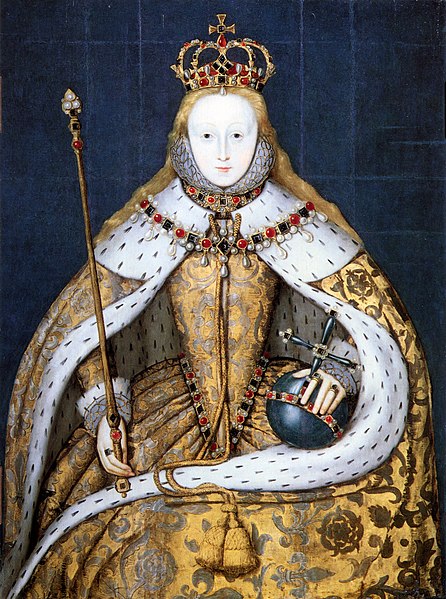Elizabethan Hair & Techniques
 |
| Unknown Artist. 1559. Queen Elizabeth I coronation portrait. Oil Paint on Panel. Available to view: http://www.tudorhistory.org/elizabeth/queen.html
The coronation portrait of Queen Elizabeth I shows the queen with her hair down and around the shoulders, which signifies a quality of innocence leading to the 'The Virgin Queen' title being given. The hair would have been her own as this was before it was all cut off and before the queen started to use wig pieces. The hair would've been styled with oil to give it that glossy effect and to keep the hair off of the face.

Robert Peake the Elder. 1610. Oil Paint on Panel. Available to view:
The portrait above shows the larger forehead, meaning that the hair would have been plucked back at least an inch with high arched brows to show beauty. The hair could have been a wig piece to disguise the Queen's thinning hair. The hair would have been pasted with cumin seed, saffron and oil to get the colouring and to set the hair. Not having access to modern day appliances means that they would have had to use every day items to create the curl in the hair; a technique that is still used today.

The rainbow portrait: attributed to Isaac Oliver. 1600. Oil paint on Panel.
Available to view:
The rainbow portrait, by Isaac Oliver shows Queen Elizabeth I with part of the hair down around her shoulders. This portrait was painted a few years before her death; so to show the hair around the shoulders was a bit unusual as many of the portraits just showed short hair away from the face to show beauty. The hair around the shoulders conveys the image of 'The Virgin Queen'. Again the forehead is larger leading back to the tight curls which may have been a wig as the queens hair was thinning. This would have already been styled by using objects that could be pinned back to create a curl.
|
No comments:
Post a Comment